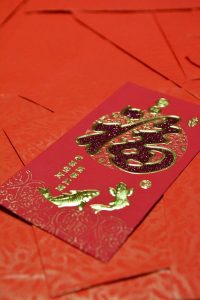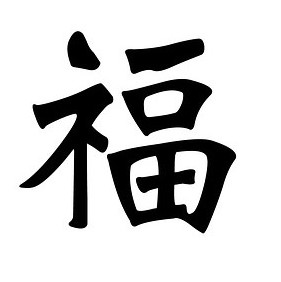
February 1 marks the beginning of the new lunar year, commonly called the Chinese New Year. This year is the Year of the Tiger in the Chinese zodiac. Get your group members into the spirit of the festivities with the fun and discussion-stimulating activity ideas below!
LEARN ABOUT THE CHINESE ZODIAC – Sit down with your group and introduce the twelve animals that make up the Chinese zodiac. Match the year of each animal with the birth year of those in your group and ask if they agree or disagree with the personality traits associated with those born in each year. Ask if the personality traits from their Chinese zodiac animal match the traits associated with their Western astrological sign. For reference, the years and animals are as follows:
Tiger: 1926, 1938, 1950, 1962, 1974, 1986, 1998, 2010, 2022
Brave, confident, competitive
Rabbit 1915, 1927, 1939, 1951, 1963, 1975, 1987, 1999, 2011
Quiet, elegant, kind, responsible
Dragon: 1916, 1928, 1940, 1952, 1964, 1976, 1988, 2000, 2012
Confident, intelligent, enthusiastic
Snake: 1917, 1929, 1941, 1953, 1965, 1977, 1989, 2001, 2013
Enigmatic, intelligent, wise
Horse: 1918, 1930, 1942, 1954, 1966, 1978, 1990, 2002, 2014
Animated, active, energetic
Goat: 1919, 1931, 1943, 1955, 1967, 1979, 1991, 2003, 2015
Calm, gentle, sympathetic
Monkey: 1920, 1932, 1944, 1956, 1968, 1980, 1992, 2004, 2016
Sharp, smart, curiosity
Rooster: 1921, 1933, 1945, 1957, 1969, 1981, 1993, 2005, 2017
Observant, hardworking, courageous
Dog: 1922, 1934, 1946, 1958, 1970, 1982, 1994, 2006, 2018
Lovely, honest, prudent
Pig: 1923, 1935, 1947, 1959, 1971, 1983, 1995, 2007, 2019
Compassionate, generous, diligent
Rat: 1924, 1936, 1948, 1960, 1972, 1984, 1996, 2008, 2020
Quick-witted, resourceful, versatile, kind
Ox: 1925, 1937, 1949, 1961, 1973, 1985, 1997, 2009, 2021
Diligent, dependable, strong, determined
EXCHANGE RED ENVELOPES – One of the traditions associated with Chinese New Year is the giving of red envelopes to children from their parents, grandparents, and other relatives, similar to the gift-giving tradition of Christmas. Unlike Christmas, however, red envelopes usually contain money, often in the form of new bills of an even amount. In place of money, exchange red envelopes with your group that contain chocolates wrapped in gold foil or other candies. You can also have your group prepare red envelopes with notes or treats for them to give to their children, grandchildren, and family.
MAKE RED ENVELOPES – Coupled with exchanging red envelopes, you can also make an activity out of having your group construct the red envelopes themselves rather than buying premade ones. All you need is some red construction or scrapbook paper and glue sticks. Fold the red piece of paper into thirds like you would a letter. Then, glue the top flap over the folded up lower third of the paper to seal the envelope and make the basic shape. Then fold one of the open ends about an inch over, gluing it down or using staples to close it. Fold the remaining open end about two inches down but leave it free to open and close. Now your group is ready to use the envelopes! You can have your group decorate their envelopes with a metallic gold permanent marker or a paintbrush and gold paint to write the Chinese characters 祥 (“xiang,” meaning “lucky”) or 福 (“fu,” meaning “good fortune”). Once they’ve put notes or treats inside, they can seal it with a glue stick.

good fortune
EATING DUMPLINGS – One of the most popular dishes shared with families at Chinese New Year is a serving of dumplings. Ask your facility’s chef or culinary director if the kitchen can prepare these tasty appetizers for your group or order some from your favorite local Chinese restaurant. As your members enjoy the dumplings, explain that the reason dumplings are served during Chinese New Year is that the word for dumplings, jiaozi, sounds similar to the Chinese words for “exchange of the midnight hours.”
YEAR OF THE TIGER TRIVIA
- There is not just one language spoken in China called “Chinese.” What are the two most popular spoken languages in China called? Mandarin and Cantonese
- What is the largest city in China? Shanghai (26.32 million people live there)
- What is the capital of China? Beijing
- Which U.S. president was the first to visit mainland China while in office? Richard Nixon in February 1972
- Which city has the oldest Chinatown in the United States? San Francisco (established in 1848)
- What city has the largest Chinatown in the United States? New York City (over 100,000 residents)
- What is China’s national animal (hint: it’s a type of bear)? Giant Panda
- What is the national pastime of China? Table tennis
- What is the world’s highest mountain above sea level that lies on the border of China and Nepal? Mt. Everest
- Who was the Venetian merchant and explorer who journeyed along the Silk Road and wrote about his travels to China? Marco Polo
YEAR OF THE TIGER THOUGHT FOR THE MONTH
“Better a diamond with a flaw than a pebble without.” ~ Chinese proverb by Jiao Hong (1540-1620), a Chinese philosopher during the Ming dynasty
“Year of the Tiger” was written by Danielle Goodman. Copyright 2022 ElderSong by Emerald Workshop LLC. All rights reserved. Reprint Policy: To reprint or republish all or portions of this entry, please acquire written permission and agree to link back to the original source. You can contact us at [email protected] to obtain permission.


